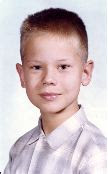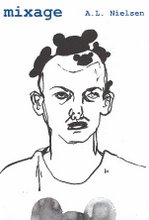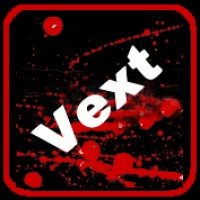Monday, April 04, 2016
E. EThelbert Miller - The Aldon Nielsen Project #17 - CHICAGO, CHANO AND CORTEZ
Q: One of my first poetry readings was with Jayne Cortez at Dingane’s Den in DC. What do you remember about her work and relationships with musicians?
A: A moment when The United States is at long last reconsidering its decades-long alienation from Cuba and its people is a good moment in which to remember Chano Pozo, to recollect his collaborations with Dizzy Gillespie on such compositions as “Cubano Be’ and “Cubano Bop,” recordings that changed the face of innovative jazz in the Americas.
Jayne Cortez certainly remembered that, and remembered that a few months following the band’s recording of those compositions in the studio, they appeared at Wrigley Field in Los Angeles. You might well have seen a very young Jayne Cortez in that audience, but when I wrote about the event in the manuscript for my book Integral Music, one of the otherwise quite positive peer reviewers wrote in his report, “tell Nielsen to get Wrigley Field back in Chicago where it belongs.” I began while reading that advice to reconsider my resistance to the suggestion common among many of my poet friends that American literature has a demonstrable Eastern bias.
I could have shown my editors this photo.
Despite featuring a diamond and being designed by the patriotically named Zachary Taylor Davis, who also designed Chicago’s Wrigley field, the Los Angeles structure is easily differentiated from its Mid-West cousin by its architectural allusions to Spanish Mission style. In fact, the Los Angeles stadium was erected before Chicago’s Wrigley, and if you’ve watched such classic films as The Pride of the Yankees or Meet John Doe, you’ve seen this place, which also appears in episodes of Twilight Zone, Mannix, even The Munsters. What I wound up sending my editors, and then citing in my book, was Jay Wright’s wonderful poem “A Non-Birthday Poem for My Father.” Wright, born in New Mexico, is, like Jayne Cortez, a native of the American Southwest, and like Cortez, who made the move from Arizona to Los Angeles, Wright’s work is marked by traces of that origin. In his “Non-Birthday Poem,” Wright remembers his father heading:
straight to California and the money
singing hillbilly songs on Central Avenue
making love to the princesses
who missed their doctors,
down by Wrigley Field,
taking the trolley out to San Pedro by the sea (25)
Cortez remembers seeing Chano Pozo at Wrigley Field; she remembers teenage dances with music by Johnny Otis (father of Shuggie Otis, who wrote “Strawberry Letter 23, which became an international hit after one of The Brothers Johnson, dating one of Shuggie’s cousins, heard the song on Shuggie’s Freedom Flight album).
That would be the Johnny Otis who grew up in Watts, helped discover Esther Phillips, co-wrote and co-produced “You Ain’t Nothing But a Hound Dog” for Big Mama Thornton, and who, with his black bands and black family, was long thought to be a black man.
Cortez remembers meeting Big Mama Thornton and talking with her about those dances, and she remembers meeting drummer Ed Blackwell in L.A. about five years after she saw Chano Pozo, and how Blackwell was like a brother to her in those years. Her poem “Everywhere Drums” is dedicated to Blackwell.
Explaining her surreal, suprareal procedures, Cortez explains that she prefers to permit “references to pop up from the out-of-nowhere place in” her, and that out of nowhere place seems so often the out-in-America nowhere of the Southwestern expanses of her memory. Cortez moved from the segregated schools of Huachuca, Arizona, to the cannery rows of mid-century San Diego, and on to Watts, the factories of Los Angeles (belts and shirts) and Wrigley Field.
And it was there, in 1964, that Cortez began performing her poetry with such innovative musicians as Horace Tapscott. Tapscott would become the leader of the Pan African People’s Jazz Arkestra, always engaged in Los Angeles’ adamantly multi-media scenes, witness the band’s central roll in an early film by L.A. rebellion director Larry Clark, Passing Through.
The last time Jayne Cortez and I were on the same program was during the Guelph Jazz Festival in 2011. Asked to speak of her many collaborations with jazz musicians, Cortez began with those early days in L.A. The American Southwest was Jayne Cortez’s Somewhere in Advance of Nowhere, the not place from which her popped up references proceeded. In the sixties, the seventies, the eighties, the nineties, into the twenty-first century in no time, Cortez never left. Even at the end, the child of Arizona’s arid segregated schools looked back in her final book to her Los Angeles years:
INTEGRATION
I knew the Father
the Son the Holy Ghost
Ave Maria Hail Mary
Dalai Lama Mother Teresa the Virgin of Guadalupe
Father Divine Brother Moses
Daddy Grace Sister Ruth Queen Mother Brown
Jimmy Swaggart Aimee McPherson
Rev. Wright Rev. Moon
Mr. Muhammed Queen Elizabeth & the Pope
We all went to Gompers Junior High School
That final book was titled On the Imperial Highway: New and Selected Poems, and what building is located right there on Imperial Highway in Los Angeles? Gompers School.
Subscribe to:
Post Comments (Atom)



























No comments:
Post a Comment